Guide
Types & Health Benefits of Tulsi (Holy Basil)

Tulsi is one of the ancient herbs that is widely used in Ayurvedic medicine. Tulsi is also known as holy basil, it is closely related to the culinary basil. The native of this herbal plant is Southern Asia and India. Due to the medicinal property of this plant, it is defined as the “Queen of the Herbs”. This plant is considered as the adaptogenic herb, it has the rich antioxidant property that helps to adapt the body to stress and helps to boost energy.
Due to the medicinal property of the tulsi, it is one of the best herbs for high blood pressure and diabetes. The linoleic acid of the tulsi is more essential to treat skin problems. The tulsi leaves have a fixed oil and are volatile which helps to fight against infections, allergies, and pathogens. The Tulsi or Holy Basil is also considered the “Goddess of Devotion” in Hinduism.
Ayurvedic Properties
❋ Taste (Rasa) : Bitter (Tikta) and Pungent (Katu)
❋ Qualities (Guna): Light (Laghu), Dry (Ruksha), and Sharp (Teekshna)
❋ Metabolic property(Vipaka): Pungent (Katu) after digestion
❋ Potency (Virya): Hot (Ushna)
Common Names of Tulsi
Botanical Name: Ocimum tenuiflorum
English Name: Sacred Basil leaves
Tamil Name: துளசி – Thulasi ilai
Malayalam Name: തുളസി – Tuḷasi
Telugu Name: తులసి – Tulasi
Hindi Name: तुलसी – Tulsi
Marathi Name: Tulsi
Bengali Name: Tulsi, Kalotulsi, Kural
Gujarati Name: Talasi, Sabje
Different Types of Tulsi

There are four types of tulsi, or holy basils are available, namely, Rama tulsi, Krishna Tulsi, Vana Tulsi, and Kapoor Tulsi. The other type of tulsi is sweet tulsi, which is commonly used to add flavors to food.
Rama Tulsi
The Rama Tulsi is also known as Lakshmi Tulsi, Sri Tulsi, and Green Leaf Tulsi. This type of tulsi has a light purple flower, which is usually found in cloves.

This green leaf tulsi is commonly used for the cooling process and for its mellower taste. This variety of tulsi is widely found in Brazil, China, Eastern Nepal, Chatgaon, Bihar, Bengal, and the south Indian States.
The whole plant has a strong aroma. This ram Tulsi has fragrance characteristics; when crushing the leaves of this tulsi between the palms, it emits a stronger fragrance than the other types of tulsi.
Krishna Tulsi
Krishna Tulsi is also known as Shyama tulsi or purple leaf tulsi. This type of tulsi is most famous for its crisp and peppery taste.

This type of tulsi can easily be identified by its purple-colored leaves and dark stems. It can easily grow in many Indian regions, and it is more difficult to find than green-type tulsi.
This type of tulsi is used to treat respiratory problems, throat infections, skin problems, and earaches. The oil prepared from the Krishna Tulsi is used as ear drops. It is also used to treat indigestion, malaria, cholera, and insomnia.
Vana Tulsi
Vana tulsi is a Wild type of tulsi; the native of this tulsi is Sri Lanka, India, and the Northern Part of Africa. This type is widely cultivated for its medicinal property, and also it plays an important role in Indian religious beliefs.

This type is commonly grown in the Himalayan regions in India. This herbal plant has light green leaves with a lemony flavor and aroma.
The leaves of the vana tulsi help to increase the immunity power, and it is usually used to prepare tea. The benefits of tulsi tea are high as it gives both mental and physical endurance, and it adds more nutrients and oxygen to the bloodstream.
Kapoor Tulsi

This type of tulsi is a short, and heavily flowered plant, this type was originally introduced to the US as a Holy Basil.
This type is commonly cultivated in India and the US. This is the easiest growing type of tulsi, and it gives the standard basil culture.
Sweet Basil
Sweet Basil is the most popular culinary herb. It is a tender annual, aromatic herb. This type of tulsi is commonly grown for its spicy aroma and flavor.

The leaves of this tulsi are big in size. This plant can be grown fast in hot weather, and the leaves and sweet basil powders are used in Asian dishes.
Nutritional Facts of Tulsi
In 5 grams (2 tbsp) of fresh basil leaves contain:
Health Benefits of Tulsi

1. Act as an anti-inflammatory
The tulsi has a strong anti-inflammatory property, that helps to cure different types of health problems. The tulsi leaves also have citronellol, eugenol, enzyme-inhibiting oils, and linalool.
The anti-inflammatory property of the tulsi helps to lower the inflammation so that you can avoid the risk of rheumatoid arthritis, heart problems, and inflammatory bowel. Chewing the tulsi leaves helps to cure headaches, fever, cold, sore throat, flu, and cough.
2. Lower Blood Pressure
Tulsi leaves help to regulate the cortisol level, which can lower cholesterol and blood pressure level. Due to this property, the tulsi leaves reduce the risk of heart attack, stroke, and other heart problems.
The tulsi also helps to reduce anxiety and depression. It also regulates consumption so that you can get better sleep and it relieves headaches.
Also Read: Best Herbal Remedies For Blood Pressure
3. Skin Care
The essential oil from the tulsi is performed as an excellent skin cleanser, it is perfect for the person who has the oilskin. Tulsi oil is used to remove the impurities and dirt that block the pores of the skin. Apply the tulsi leaves paste on the face for 20 minutes and wash your face using cold water.
The antimicrobial and anti-inflammatory properties of the tulsi leaves help to protect the skin from the formation of acne. Tulsi paste is also known as an ailment to heal many diseases. The extract from the tulsi leaves helps to cure skin problems and ringworm.
Some of the physicians are using tulsi paste as skin ointments and also it is used to treat leucoderma. The tulsi is also used to prevent premature aging and helps to maintain healthy skin.
4. Has Disease-fighting Antioxidants
The essential oil of the Tulsi helps to fight against the radical damage that protects the cells and DNA structure.
Tulsi leaves have the two water-soluble flavonoid antioxidants, viceninare, and orientin, it helps to improve the immunity system, protect the DNA and cell structure, and reduce skin aging.
5. Stress Buster
The essential tulsi oil helps to reduce anxiety and depression also. This herbal plant stimulates the neurotransmitters that help to regulate the hormones so that it improves happiness and energy.
Chewing the fresh tulsi leaves helps to control the stress and it helps to manage anxiety. Tulsi tea is highly recommended to reduce stress.
Also Read: Guide To Manage Stress
6. Regulate Blood Sugar
The tulsi leaves are also used to maintain blood sugar at a stable level. It helps to improve metabolism, promotes good fat and carbohydrates in the body.
Also Read: Best Herbs to Treat Diabetes
7. Protect against infection and heal wounds
Applying the extract of the tulsi leaves on the wound will reduce the healing time. Some people are using this tulsi extract after the surgery to protect and heal wounds from infection. It helps to increase the breaking strength of the wound and also it boosts the healing time and contraction.
8. Treats Gastric Disorders
Tulsi is used to treat ulcers, indigestion, vomiting, intestinal parasites, menstrual cramps, gastric disorders, and stomach pain. It is also used to reduce kidney stone pain and helps to prevent kidney stones.
9. Tulsi for fever
The decoction of neem leaves, tulsi leaves, long pepper powder, and ginger powder is used to reduce the fever and the considerable symptoms of fever.
The tea made by tulsi leaves has effectively fought against dengue and malaria fever, it is highly recommended to use in the rainy season. Applying the tulsi leaves paste on the cold feet at fever time provides more benefits to you.
Also Read: Natural Herbs to Cure Fever
10. Home Remedy for Cough
Tulsi leaves are the best home remedy to treat cold and cough. The decoction of the tulsi leaves, black and long pepper powder, and ginger powder with honey is used three times per day to cure the cold, cough, and fever in the rainy season.
Tulsi leaves are a good remedy to cure the symptoms of cold and cough. The tulsi leaves juice with the sugar is functional medicine for the person who is suffering from the expectorant. The mixture of tulsi leaves, ginger juice, and onion is suitable for dry cough.
Also Read: Best Herbs To Treat Cold
What is Tulsi Good For?

✤ Tulsi for Skin
Tulsi is proven as one of the safest skin creams, and it provides a massive benefit to your skin. If you consume or apply the tulsi leaves paste on your skin, it will reflect on your skin health.
This is an excellent herb to treat skin infection, acne, dark spots, and also it helps to improve the texture of the skin. Using the tulsi leaves powder with the egg helps to tighten the pores on the skin. It is also used to treat any kind of skin allergy.
Also Read: Herbs to treat skin infections
✤ Tulsi For Eyes
Nowadays, the eyes are highly affected by dust and infection so most people have eye infections. Tulsi is an immediate solution to cure eye infections.
By using the tulsi leaves paste you can soothe your eyes. Washing the eyes using the tulsi leaves boiled water will help to remove the dust from the eyes.
The eyes washed with the tulsi leaves boiled water also helps to reduce the strain on the eyes, and makes you feel relaxed. The Tulsi eyewash is also protecting your eyes from many infections, like boils and conjunctivitis.
Also Read: Best Herbs For Clearer Eyesight
✤ Tulsi For Hair
One of the holy basil benefits is, it is used to treat hair problems; you can apply the tulsi paste for multiple reasons that help to cure hair problems in all ways.
Using the Tulsi leaves on the hair will prevent hair fall, and also it stops the hair from becoming graying and keeps it black and thick. Applying the paste of the tulsi leaves will stop dandruff and prevent dry scalp.
Also Read: Best Herbs for Hair Growth
Benefits of Tulsi Tablet

The Tulsi tablets consist of the tulsi powder and tulsi extract from the tulsi leaves, which is used to treat allergic rhinitis, common cold, cough, and other respiratory problems.
Tulsi tablets are also used to treat other cold-related problems, such as running nose and sneezing, and it helps to soothe your throat and clears the respiratory tract. The tulsi tablet is also used to manage stress.
How to consume Tulsi Tablet?
You have to be prescribed by the physician before using the tulsi tablet; it can be taken two times per day. Consulting with the physician will help to avoid side effects. Get the 100% organic herb in the form of pills that save the cleaning and consuming time of the herb. These processes are compressed into the pill, which helps to fight against cough, cold, and other respiratory problems.
If you suffer from cough and cold, the tulsi tablet will help to fight against the infections. You can confidently use the tulsi tablets without any fear of side effects. Nowadays, most people understand the benefits of herbs and their effect to cure health problems. The zero side effect of these herbs is challenging western medicine.
Frequently Asked Questions
How and When to grow Tulsi?
Usually, the tulsi plant is grown well in moisture-rich soil, the ample sunlight is enough for the growth of the tulsi plant. You can start planting by burying the seeds into the few centimeters below the soil and lightly cover with the dirt. Allows the tulsi plant to grow indoors till it grows 6-7 inches tall. After this transfer the plant to the outdoors. Tulsi should be planted under the intense heat, before the monsoon.
How to Consume Tulsi?
Tulsi can be consumed raw, pluck the leaves fresh from the plant, and consuming will give a good result. You can add the tulsi leaves to the tea or make kadha out of it. Apart from consuming the tulsi leaves in the usual way, you can use the holy basil with your cooking for the taste and aromatic flavor of your food. Using the tulsi leaves, you can prepare the most basic and widely loved sweet foods.
How to Drink Tulsi Tea?
The herbal infusion or herbal tea is the easiest way to consume the tulsi leaves. To prepare Tulsi Tea:
- Boil 1 cup of water
- Pour 1 spoon of fresh tulsi leaves or use 1/2 spoon of dried tulsi leaves or 1/3 spoon of tulsi powder.
- Boil to water with the substances for 20 minutes.
- Filter the leaves and add the honey with the filtered water.
Is Caffeine Content in Tulsi Tea?
Tulsi tea is free from caffeine so you can safely consume it six times per day. Anyhow, the tea producers add the tulsi with the green, white, or black tea leaves, so if you want to avoid the caffeine, you have to check the package carefully.


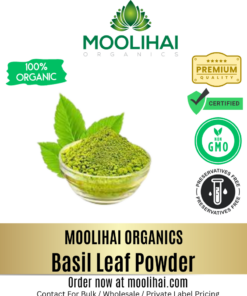

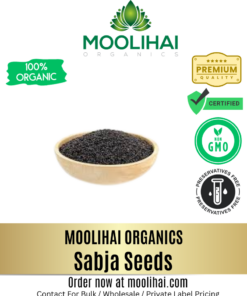

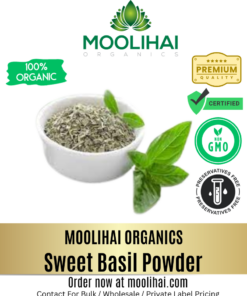

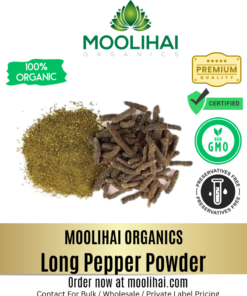

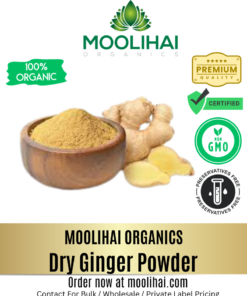

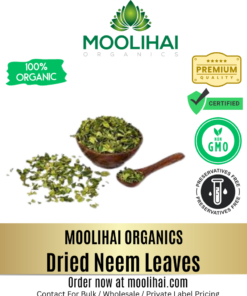

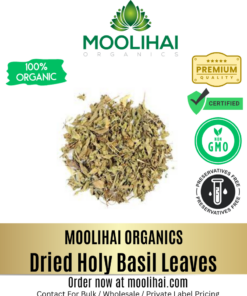

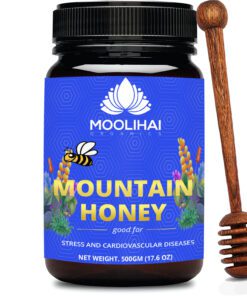

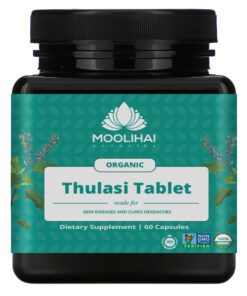
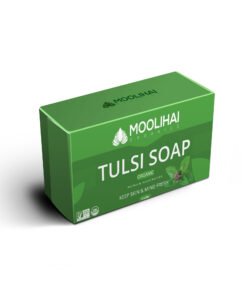
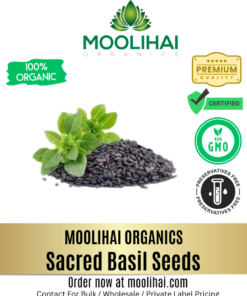

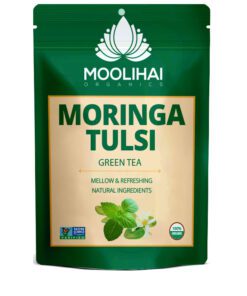
Ponnatharam Stone (Raw) | For Permanent Hair Removal
Vengai Paal | Black Bindi | Dhrishti Pottu | Vengai Pottu for Babies | 100% Natural
Dried Avaram Senna Flower / Cassia Senna Auriculata / Aavaram Poo / Tarwar / Amaltas Leaves / Senna Auriculata / Avaram Poo / Sanay / Alexandrina / Tanner’s Cassia flower
Natural Dried Moringa Flower – Moringa Oleifera – Drumstick Tree Flower – Murungai Poo – Munagaku Flower
Akasa Garudan Kilangu / Redfruit Creeper / Corallocarpus Epigaeus
Original Edible Camphor | Pacha Karpooram | Bhimseni Camphor
Pure Ponnatharam Powder For Hair Removal
Saussurea Obvallata Seeds / Brahmakamal Seeds / Queen of the night / Sacred Saussurea Kon Kapfu / Brahma Kamalam / Nishagandha
Insulin Leaf Powder / Chamaecostus Cuspidatus / Costus Pictus / Spiral Ginger / Insulin Powder / Costus Igneus
Kaunch Beej Powder |Poonaikali | Velvet Bean Powder | Mucuna Pruriens | Kapikacchu | Natural Nervine Tonic & Muscle Builder
Achu Pottu for Babies | Bindi Mould Set | Baby Seratta – 1 Set
Aalam Pazham / Banyan Fruit Powder / Ficus Benghalensis / Marri Palu / Bargad / Dodda Alada Mara / Peraal / Vat Vriksha Powder